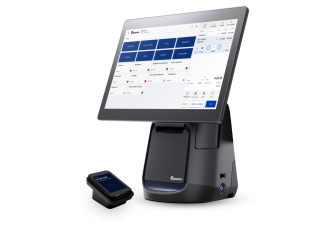The Four Ps of Marketing
When you’re trying to sell or raise awareness for a product or service, you need a strategy. And no matter what you’re doing, most marketing strategies are based on the Four Ps.
The Four Ps is a fairly basic concept for considering how a business engages its product with its market. Using the Four Ps: Product, Price, Place, and Promotion, a business can get a basic but powerful sense of how their product is likely to be seen and related to by their potential customers.
If you have a new product you want to sell, a business you want to promote, or a service you think people will like, the Four Ps will give you a guideline for marketing that product to the world.
Here are the Four Ps of marketing.
How did the Four Ps come to be?
The Four Ps were developed by Professor Neil Borden at Harvard University in the 1940s as part of his ‘marketing mix’ theory. Inspired by James Culliton’s concept of marketers as ‘mixers of ingredients’ [source], Borden’s‘ marketing mix’ contained the Four Ps - different ingredients that marketers can combine in different quantities to create an optimal foundation for a marketing campaign.
The marketing mix was originally designed to help companies overcome physical barriers to widespread product adoption. But with the advent of the internet, the barriers between consumers and companies are much smaller. However, the Four Ps still make up the foundation of how to approach any marketing strategy today.
Product
‘Product’ refers to the product that the company sells. The ‘product’ in this case can also refer to a service, as ‘product’ simply refers to the thing being sold.
Products must meet existing consumer demand in a way that makes them distinct from your competitors. You need to know what makes your product unique, and the preferable choice in a densely populated market.
Let’s say you’re a restaurant owner. You’ve just opened a Mexican restaurant in a low-middle income neighborhood in a large city. Whether this restaurant thrives will depend on how the owners of this restaurant approach the ‘product’ dimension. Is this restaurant significantly different from other Mexican restaurants? Is it the only one in the area? Are your dishes distinct enough to help you stand out, but reliant enough on Mexican classics to meet people’s expectations?
When looking at your offering, ask yourself questions like:
- What’s the biggest problem I can solve?
- What’s my customers’ favorite ‘product’, and what can you learn from it?
- How can I make my current ‘product’ better?
- Why should people buy from my business?
Price
Price simply represents how much you charge for your product.
Getting the right price for your product can be tricky, though. You want a price that will help you maintain good profits, but low enough that you’re not turning people off.
For most people, price is a primary consideration when they buy a product. If you have two more or less identical products, but one is cheaper, most people would likely take the less expensive item.
However, a high price is not necessarily a deal-breaker for the right product. Some brands and products thrive on the idea that their products are expensive, and thus exclusive, conferring a certain amount of status to the owner [2]. This is what's known as the "brand markup" phenomenon. Would Rolex watches still have the same reputation if they were sold for $10 each? Probably not.
When trying to determine the price for your product, ask yourself questions like:
- What are my competitors charging?
- What’s the lowest price I’m willing to offer?
- What’s the highest price my consumers are willing to offer?
- Is my product in a market that is sensitive to price?
Place
When we think about ‘place’ in the Four Ps, we’re thinking about location. Where you sell your product can have a massive impact on the success of your business.
Let’s say you’re opening a cupcake shop. You found a newly built retail space with cheap utilities, cheap rent, and lots of space for displays and tables. This sounds like a pretty good location, right?
Unfortunately, this retail space is beside an on-ramp to a major highway and so doesn’t have a lot of foot traffic. Businesses like bakeries thrive the best when they’ve in locations with lots of foot traffic [3]. Because of this, the cupcake shop is likely to fail.
Place can also inform where you advertise and sell your products if you don’t have your own location.
Let’s say you’re manufacturing high-quality watches. When looking for an appropriate retail space, you’re better off targeting high-end jewellery stores, as this type of location better suits your product and your brand. It would be less appropriate, for instance, to try to sell these watches in a budget retail store.
When considering place, ask yourself questions like:
- Where are my ideal customers?
- What locations and companies would best suit my product at the price I’m charging?
- What are the most appropriate distribution channels?
- Who are my competitors?
- Should I sell directly to the customers, or should I use a third party?
Promotion
Promotion is how you get your product noticed by your ideal customers.
When promoting your product, you want to choose the right channels that will work best for you. This can include everything from magazine ads to product placements, billboards to text-based search ads.
Let’s return to our Mexican restaurant. You’re the owner of the restaurant, and you’ve decided you want to advertise. He knows that his main customers are people in his local area, most likely working families and students, who are looking for a good, tasty meal with well-prepared Mexican fare at a reasonable price. So, the owner decides to focus on social media promotions, making organic posts with lots of engagement and buying search ads targeted at people in his local area. This is a great option for him, because it’s a targeted approach that doesn’t cost a lot of money.
Like the example above, you want to target your ideal customers where they are. Types of channels might include:
- Online marketing
- SEO
- Social media
- Google Ads
- Facebooks Ads
- Microsoft advertising
- Affiliate marketing
- Text/SMS
When trying to think of your promotions, ask yourself questions like:
- Which channels do my ideal customers use to consume information?
- What type of message is best for promoting my products?
- Is there an ideal time of day/month/year to promote my product?
- How are my competitors undertaking promotions?
Manage your marketing activities directly from your POS
Marketing can be incredibly difficult. But how much easier could it be if you could undertake so many different marketing activities right from your bakery point of sale system?
An Epos Now POS can integrate with dozens of the most widely-used apps in your industry, including Mailchimp. Set up, manage, and execute sophisticated email campaigns to drive repeat business to your store.
- Set up targeted workflows based on your customers’ purchases
- Access detailed analytics for open and click-through rates
- Automate email campaigns to get customer feedback
- Use a drag-and-drop email builder with over 100 templates
- Convert lost sales into buying customers via targeted campaigns and communication
Contact Epos Now to find out more about our apps.
You may also like:




